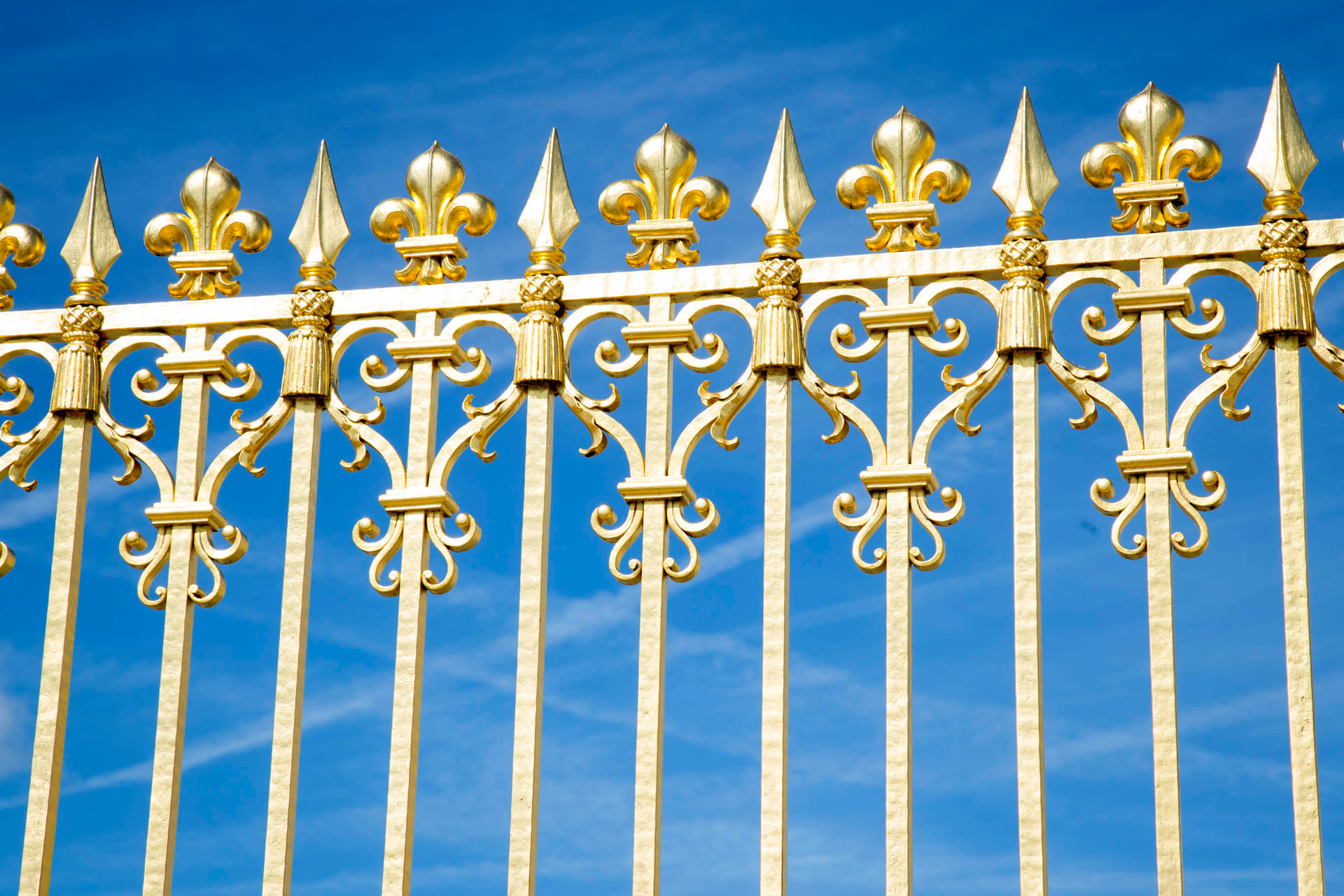The poetic fleur-de-lis, or flower of lily, as the term translates to English, is a distinctive decorative symbol in a wide range of art forms – from paintings, iron decorations, clothing and textiles, and even tattoos. It is a sign of sophistication and purity and has once been an important sigil of nobility throughout Europe.
Its origin story, however, has long been a subject of historic debates. One legend goes that the fleur-de-lis was presented to the Merovingian king of the Franks – Clovis I – and symbolized his purification upon his conversion to Christianity.
Other stories claim that Clovis adopted the symbol after he got inspired by water lilies and their effortless floating above the water.
But the story of the fleur-de-lis doesn’t begin in the 5th century AD, it’s arguably a much older one. A story that can even be traced back to the first human civilizations.
What is the origin of the fleur-de-lis? And how did it become such a popular decorative piece in iron forging?
Let’s find out.
Briefly on the History of Fleur-De-lis
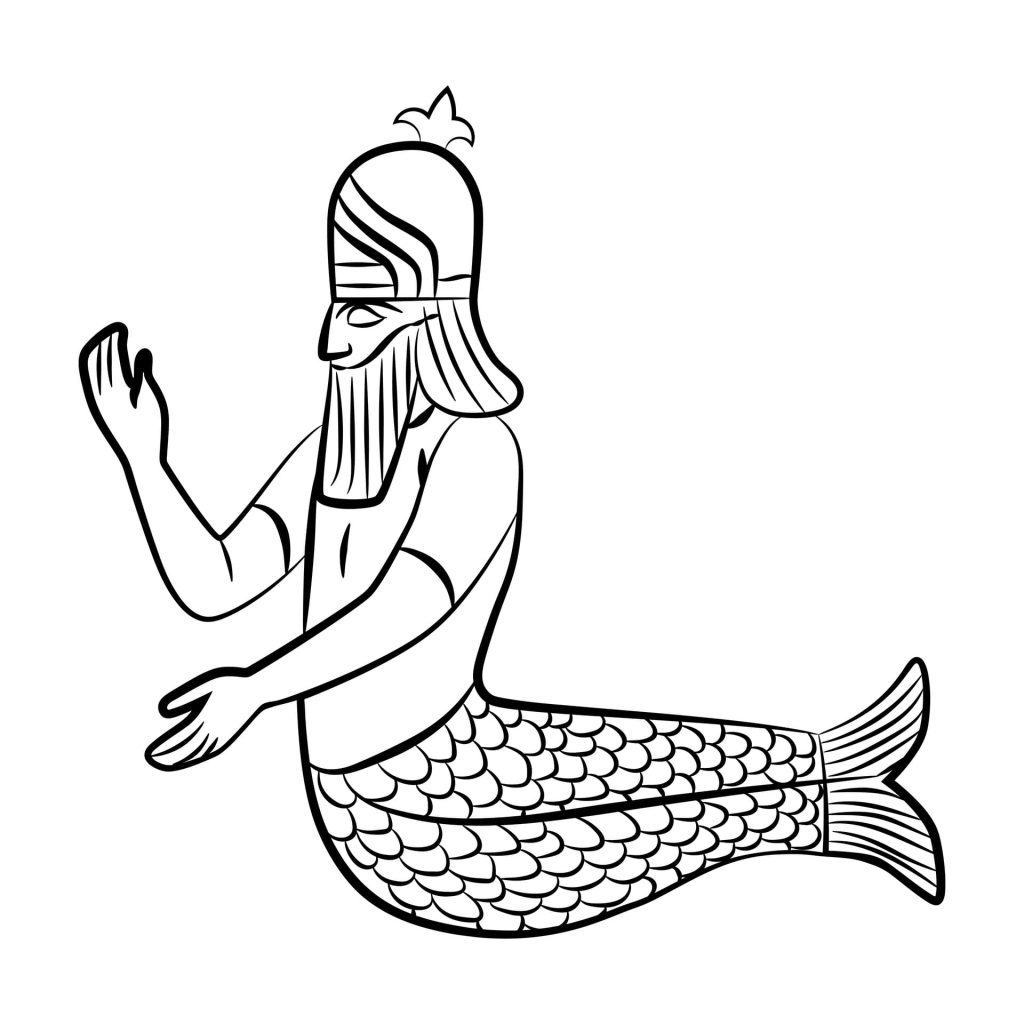
Illustration of Sumerian Fish God Dagon – God of Prosperity & Father of Gods
The fleur-de-lis has a millennia-long history. But its origin is complicated, as historical evidence is interpreted differently and arguments about where and when the symbol was created and assigned its current symbolism continue to exist.
Some sources claim that the ornament was created by the ancient Egyptians and Babylonians. Archeological evidence suggests that the flower originated from those two civilizations and much later developed in France.
Other researchers have also found imagery of the Fish God Dagon – an ancient Sumerian deity, portrayed with a fleur-de-lis, on top of his crown. This suggests that the symbol might have come from the earliest known civilization that flourished in the region of Mesopotamia (nowadays Turkey, Iraq, and Syria) between 4500 and 1900 BC.
One of the earliest surviving examples of a gold helmet, featuring the ornament is attributed to the ancient Scythians – nomadic people who lived in modern-day Kazakhstan, between 700 to 300 BC.
The flower of lily has seemed to have traveled the ancient world well, as the symbol is also present in a statue of the Indian emperor Kanishka, who ruled between 127 and 150 AD.
The Origin of the Fleur-De-lis Name
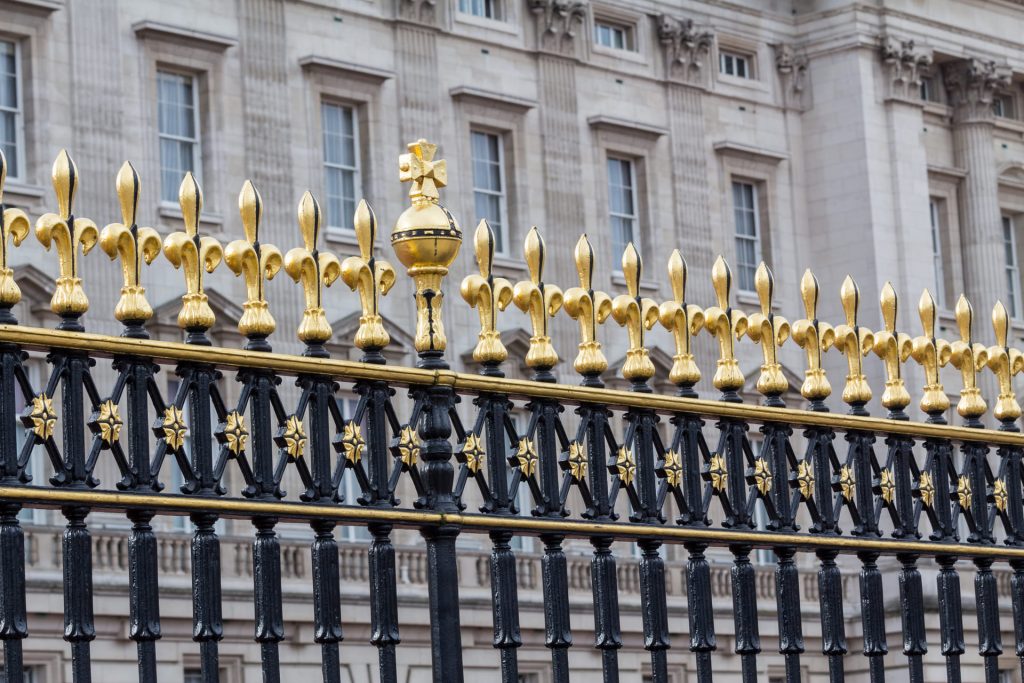
To add to its complicated history, the inspiration behind the name of the design is also debated.
Some historians say it’s inspired by the lily flower, but others argue it comes from the flower iris. An 18th-century historian even speculated that the name was taken from the river Lys (or Leie), where Franks lived.
There is also another theory that supports the naming of the ornament after the iris flower. According to it, the name comes from the Medieval German word for yellow iris – “liesch” or “lies.”
Yet another source says the name of the fleur-de-lis, comes from the lotus plant, or as it’s commonly known – water lily. The legend of king Clovis might have fueled this origin story.
Fleur-de-lis in Religion
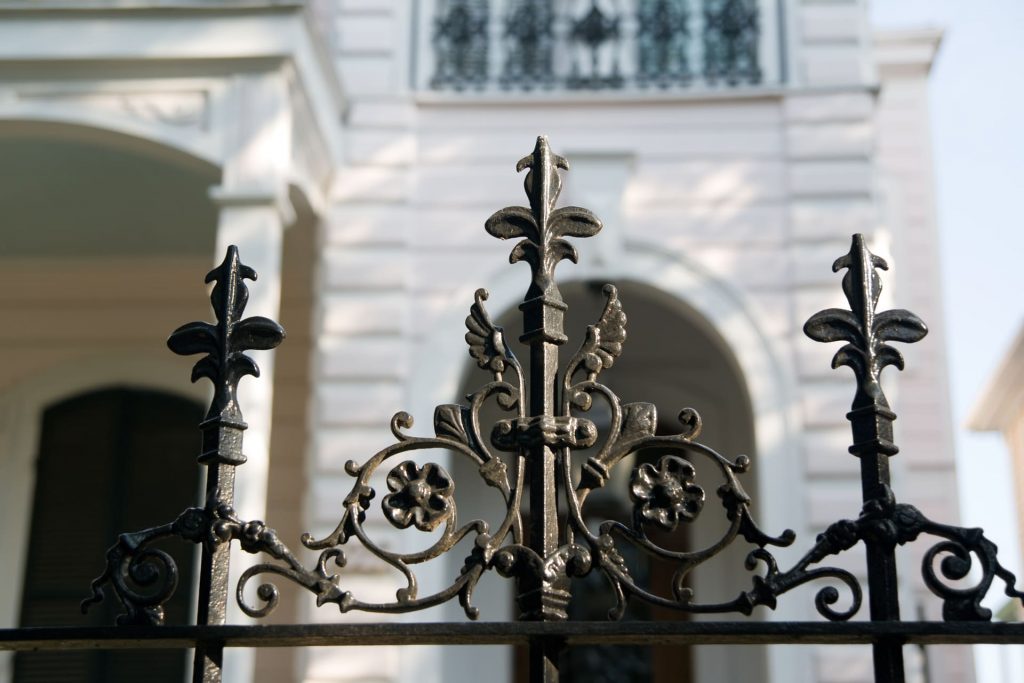
The fleur-de-lis, as some other sources state, is the sign of an ancient flower that life emerges from. In a religious context, the flower’s sturdy stem is God, ever-present, and whose strength is the source of our sustenance.
During the Middle ages, religion and art often intertwined, and the use of the fleur-de-lis symbol carried primarily religious meaning.
As historian Michel Pastoureau explains, until 1300, the ornament was mainly used in depictions of Jesus, but after gradually transferred to symbolize the purity of Holy Mary – mother of God and her association with the Song of Solomon’s “lily among thorns”.
In another religious scripture, the lily is presented as a symbol of chastity and purity, qualities attributed to the Virgin, which explained its use in iconography.
The three petals of the design were also associated with the Holy Trinity with the band on the bottom used to symbolize Mary. The inclusion of Mary was explained as her being inextricably connected to the Trinity, as the one who bore The Son.
This tradition can be traced back to 14th century France, where the use of the symbol widely spread from. This reading of the fleur-de-lis symbolism added to the belief that this sign of heraldry represented chivalry, wisdom, and faith.
Fleur-De-lis as a Prominent Decorative Element in Iron Forging
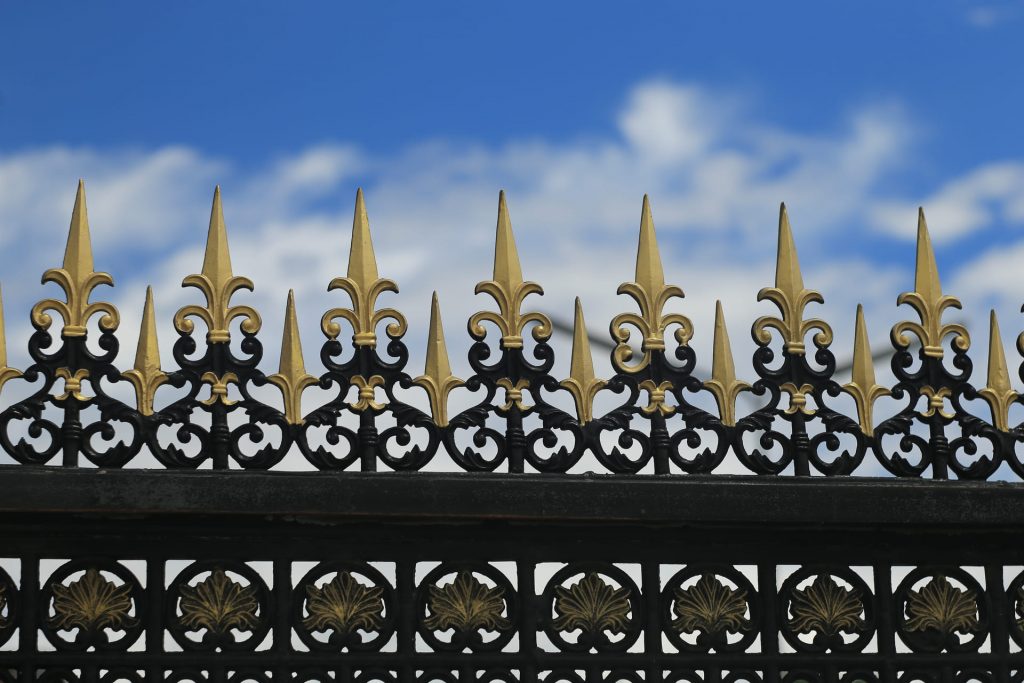
The decorative pattern of the fleur-de-lis has long inspired masters of many crafts and arts and has had a permanent place in the ornamentation of castles, clothing, and jewelry of aristocratic families throughout the centuries.
Some families have used it as a sigil, a piece of heraldry with many European nations using it as their lineage sigil throughout the past centuries. The fleur-de-lis was particularly popular amongst dynastic French aristocrats, during the monarchial period.
The French higher class adorned everything with the symbol – their clothing, their official correspondence, home textiles, interior decoration. The ornament even appears in the most intricate wrought iron gates, fences, and railings.
The fleur-de-lis has been used to simultaneously represent the artistic, political, religious, and symbolic insignia of these families and as a representation of Catholic saints of France. It was a holy symbol that was added in depictions of the Virgin Mary and Saint Joseph.
In architecture and design, the fleur-de-lis is usually placed on top of iron fence posts, as a sharp defense feature against trespassers.
The fleur-de-lis is often included in cornices and friezes, as a centerpiece, or repeated design ornament in interior and exterior iron railings.
Some of the most famous historic monuments featuring the symbol are the 14th century Muslim Mosque-Madrasa of Sultan Hassan and the 16th-century Hindu Padmanabhaswamy Temple.
Interestingly, the fleur-de-lis appears on the flag of New Orleans. It was established as an official symbol of Louisiana, by governor Bobby Jindal in 2008.
On a Final Note
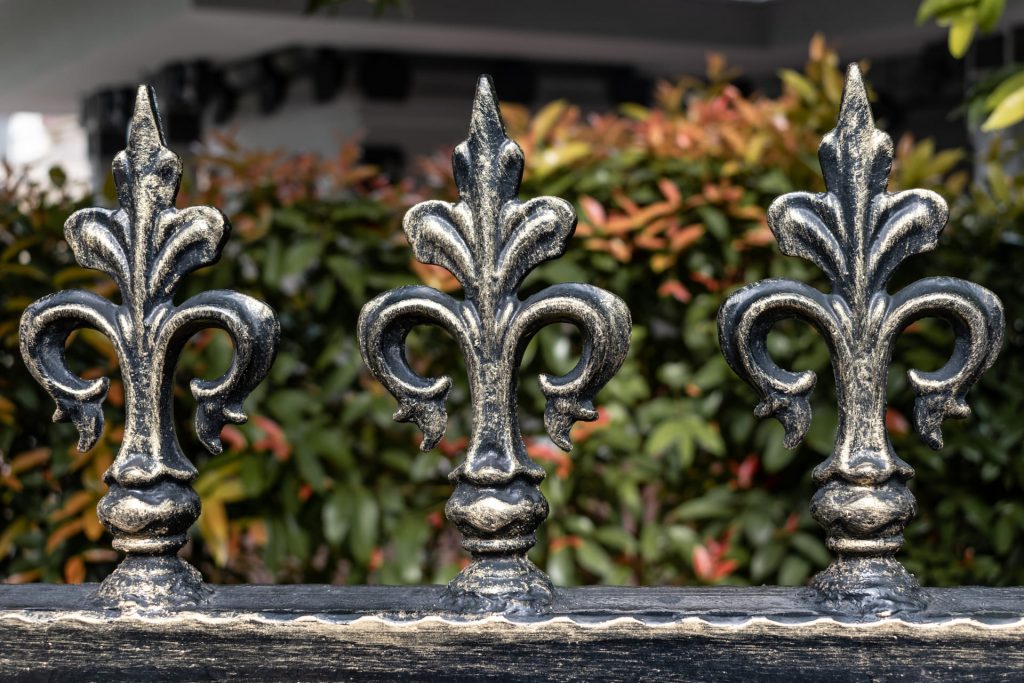
Today the symbol of the flower lily, or fleur-de-lis, can be found everywhere from religion to royalty, boy scouts, and fashion. It is an enduring part of our love of symbolism and has left a permanent mark in monuments, architectural and interior design styles, and family histories.
It’s an ornament that continues to influence arts, crafts, and masters of any trades. If you’re interested in adding that extra layer of elegance and detailing to your iron gates, fences or railings, get in touch with the Cacciola team for a consultation with experienced iron forging artisans.
